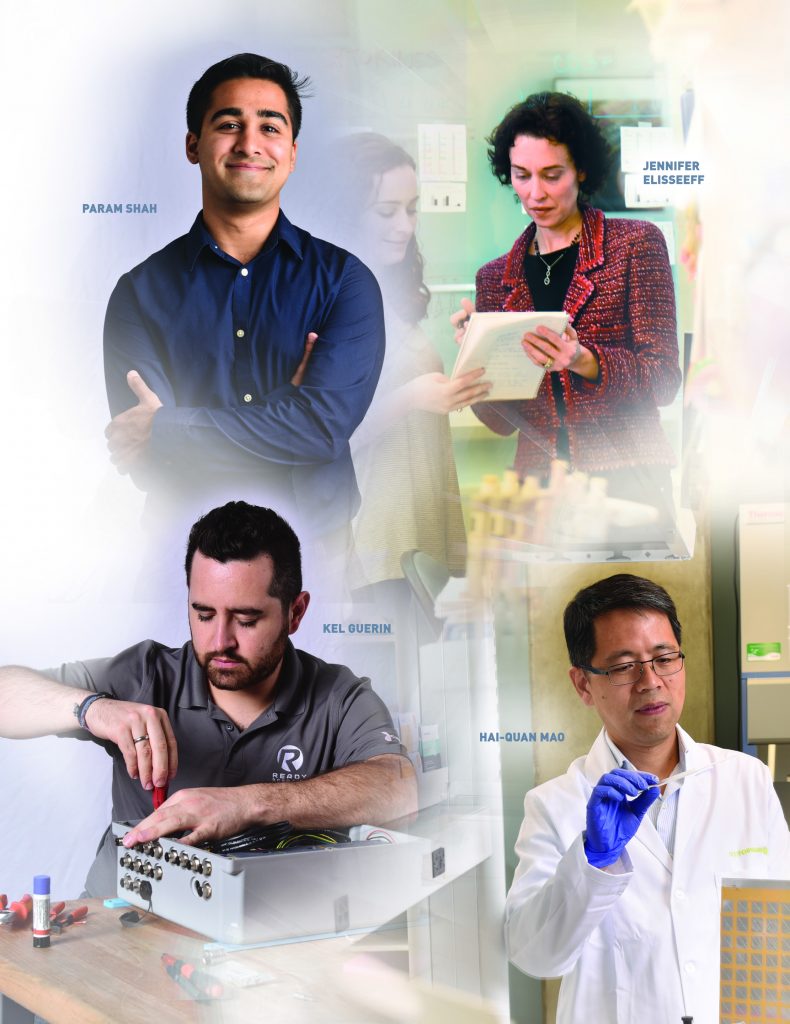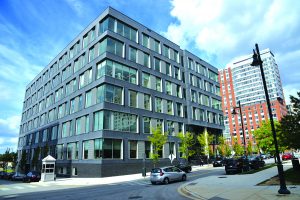
“This is Disneyland for scientists!” Brian Stansky is proclaiming, in his hard hat, in the glass-walled lobby of 1812 Ashland Avenue, just north of the Johns Hopkins Hospital.
Stansky, a former Wall Street investment manager, is showing off the newly hewn work spaces, wet labs, canteens, and conference rooms in the 23,000-square-foot building that is part and pride of the university’s recent commitment to translating basic laboratory research into real-world innovations, transformational inventions, and life-changing technologies.

The gleaming new center for the FastForward program of Johns Hopkins Technology Ventures is indeed a 21st-century theme park, where the fantasyland of a researcher’s brainstorm can be translated into a tomorrowland of new products … if that brainstorm can thrive in the daunting frontier of venture capital and bare-knuckled competition.
In the past five years, Johns Hopkins University has stepped up its game in technology transfer. In October, the newest incubator opened in nearby Remington, atop a hipster eatery and within walking distance of Homewood campus. A spacious student design warehouse, called FastForward U, is expected across the street from the Remington incubator in spring 2018. With these and other ventures, Johns Hopkins engineers, clinicians, scientists, and students are being encouraged and expertly assisted with affordable space, services, mentorship, and funding opportunities as they strive to commercialize their discoveries in this new ecosystem. You could call their battle to thrive in the open marketplace the new War of 1812.
“It’s about dreamers,” says Stansky, senior director of the FastForward entrepreneurship program. He is describing the accelerating startups and nascent businesses that are budding at the new location, which is part of a rapidly expanding spectrum of spaces in use and under construction across Baltimore, both on campus and off. “It’s about long hours. It’s frustrating. It’s crazy at times. It’s about finding out what you don’t know—trying new things, taking calculated risks. It’s about, ‘Who wants my product? What is it worth?’
“Early on,” he says, “it’s all about the science, the intellectual property. Later on, it’s about team building. Our job is to help our scientists and engineers understand reality: Is there really a market for what you want to do?”




